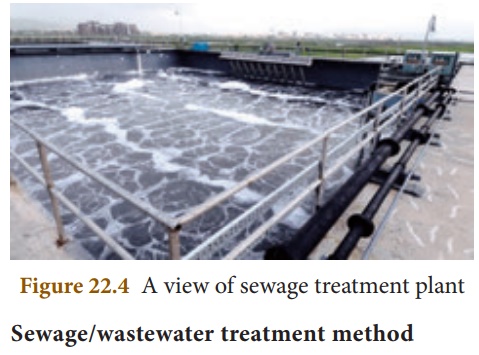Chapter: 10th Science : Chapter 22 : Environmental Management
Sewage Management
Sewage
Management
Untreated sewage or
wastewater generated from domestic and industrial process is the leading
polluter of water sources in India. Sewage water results in agricultural
contamination and environmental degradation.
Sources of Sewage/wastewater
·
Domestic purpose or household activities
·
Dye and textile industries
·
Leather industries
·
Sugar and breweries industries
·
Paper and pulp industries

Sewage/wastewater treatment method
The conventional
wastewater treatment methods involve the following steps (a) Pre-screening
(b) Aeration (c) Sludge Management and (d) Water Reuse.
Pre-screening: Wastewater generated
from domestic and industrial activities is screened to remove soil and
solid particulates.
Aeration : Screened wastewater is
then pumped to an aeration tank. Here the microbial contaminants are
removed by the biological degradation that occurs in the presence of air.
Sedimentation process: In this process, the
solid particles in suspension form are allowed to settle. The particles that
settle out from the suspension is known as sludge.
Sludge removal : The sludge generated
by the degradation process is transferred periodically from the tank for
safe disposal.
Disinfection: Chlorination and ultraviolet
(UV) radiation of treated water is required to remove any microorganism
contamination.
Water recycling: The water will then be
supplied for domestic or industrial purposes.
Related Topics